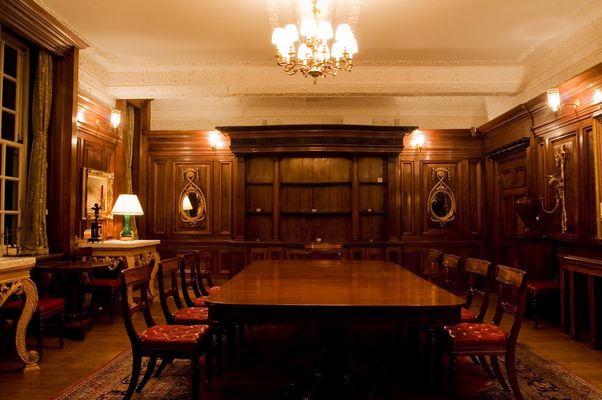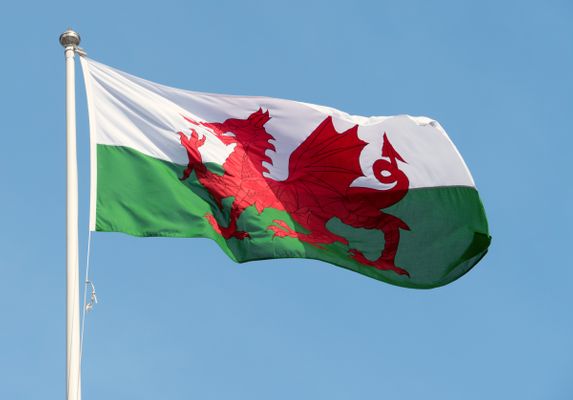1.2.7
Henry VIII & Society
Elite and Commoners under Henry VIII
Elite and Commoners under Henry VIII
'The Great Chain of Being' was used to justify the hierarchical nature of English society. Henry VIII wanted to be more popular with his subjects, in comparison to his father.


Nobility
Nobility
- Like his father, Henry VIII wanted to limit the power of the nobility.
- He strengthened the power of the Justices of the Peace (JPs).
- Some of Henry VIII's closest advisors were courtiers in the Privy Chamber.


Beneficiaries of the dissolution
Beneficiaries of the dissolution
- Alongside the King, the nobility were the main group to benefit from Henry VIII's dissolution of the monasteries.
- Many noblemen bought land seized by the Crown to enhance their wealth.


Hierarchy of Commoners
Hierarchy of Commoners
- Gentry - wealthy landowners who did not have aristocratic heritage.
- Merchants - men who lived in cities and traded in goods.
- Yeomen - independent farmers who had their own land.
- Husbandmen - independent subsistence farmers who had their own land. This means they usually only produced enough for their family.
- Cottagers and labourers - farmers who worked on other people's land in return for wages.


Landords and tenants
Landords and tenants
- There was a reciprocal relationship between wealthier landlords and their tenants (people who rented their land).
- Commoners lived off the land of noblemen and were expected to be obedient to their landlord (deference). In return, the nobleman would protect their tenants (paternalism).
Regional Issues During Henry VIII's Reign
Regional Issues During Henry VIII's Reign
Henry VIII and Cromwell used the Henrician Reformation to centralise royal authority. Tightening control over Wales and the north, the law could be more uniformly applied across the kingdom.


Wales
Wales
- The Act of Union 1536 brought Wales into English legal and government systems.
- Wales was divided into three shires with JPs appointed by the king and given 24 MPs.


The North
The North
- The Council of the North was re-invigorated after the Pilgrimage of Grace (a rebellion in 1536 which began in Lincolnshire). The King’s authority was felt more directly.
- The council was responsible for: law and order north of the River Trent; appointing and overseeing JPs; serious crimes like treason.


Local power
Local power
- The Act of Liberties and Franchises in 1535 removed powers traditionally held by local nobles.
- For example, Durham was a semi-independent region run by its bishop.
1Consolidation of the Tudor Dynasty 1485-1547
1.1Henry VII 1485-1509
1.1.1Henry VII's Consolidation of Power
1.1.2Henry VII & Succession
1.1.3Henry VII's Councils & Parliament
1.1.4End of Topic Test - Henry VII Part 1
1.1.5Henry VII & Justice, Finance & Policies
1.1.6Henry VII's Relationship with Foreign Powers
1.1.7Henry VII & Society
1.1.8End of Topic Test - Henry VII Part 2
1.1.9Henry VII & Regional Issues
1.1.10Henry VII & Economic Development
1.1.11Henry VII & Cultural Development
1.1.12End of Topic Test - Henry VII Part 3
1.2Henry VIII 1509-1547
1.2.1Henry VIII's Consolidation of Power
1.2.2Henry VIII & His Government
1.2.3Henry VIII & His Government 2
1.2.4End of Topic Test - Henry VIII Part 1
1.2.5Henry VIII & Succession
1.2.6Henry VIII's Relationship with Foreign Powers
1.2.7Henry VIII & Society
1.2.8End of Topic Test -Henry VIII Part 2
1.2.9Henry VIII & Society 2
1.2.10Henry VIII & Economic Development
1.2.11Henry VIII & Religion
1.2.12End of Topic Test - Henry VIII Part 3
2England: Turmoil & Triumph 1547-1603
2.1Instability & Consolidation 1547-1563
2.1.1Edward VI, Somerset & Northumberland
2.1.2Edward VI & Authority
2.1.3Edward VI & Relations with Foreign Powers
2.1.4End of Topic Test - Edward VI Part 1
2.1.5Edward VI & Rebellions
2.1.6Social Impact of Religious & Economic Changes
2.1.7Edward VI & Cultural Developments
2.1.8End of Topic Test - Edward VI Part 2
2.1.9Mary I & Her Rule
2.1.10Mary I & Relations with Foreign Powers
2.1.11The Social Impact of Religious & Economic Change
2.1.12End of Topic Test - Mary Part 1
2.1.13Elizabeth I & Her Rule
2.1.14Elizabeth I & Relations With Foreign Powers
2.1.15Impact of Economic, Social & Religious Change
2.1.16End of Topic Test - Elizabeth I Part 1
2.2The Triumph of Elizabeth 1563-1603
2.2.1Elizabeth I & Court
2.2.2Elizabeth & Government
2.2.3Elizabeth I & Succession
2.2.4End of Topic Test - Elizabeth I Part 2
2.2.5Mary Queen of Scots
2.2.6Relations with Spain
2.2.7End of Topic Test - Elizabeth I Part 3
2.2.8Elizabeth I & Society
2.2.9Elizabeth I & Rebellion
2.2.10Elizabeth & Economic Development
2.2.11End of Topic Test - Elizabeth I Part 4
2.2.12Elizabeth I & Religious Developments
2.2.13The English Renaissance
2.2.14Elizabeth's Last Years
2.2.15End of Topic Test - Elizabeth I Part 5
Jump to other topics
1Consolidation of the Tudor Dynasty 1485-1547
1.1Henry VII 1485-1509
1.1.1Henry VII's Consolidation of Power
1.1.2Henry VII & Succession
1.1.3Henry VII's Councils & Parliament
1.1.4End of Topic Test - Henry VII Part 1
1.1.5Henry VII & Justice, Finance & Policies
1.1.6Henry VII's Relationship with Foreign Powers
1.1.7Henry VII & Society
1.1.8End of Topic Test - Henry VII Part 2
1.1.9Henry VII & Regional Issues
1.1.10Henry VII & Economic Development
1.1.11Henry VII & Cultural Development
1.1.12End of Topic Test - Henry VII Part 3
1.2Henry VIII 1509-1547
1.2.1Henry VIII's Consolidation of Power
1.2.2Henry VIII & His Government
1.2.3Henry VIII & His Government 2
1.2.4End of Topic Test - Henry VIII Part 1
1.2.5Henry VIII & Succession
1.2.6Henry VIII's Relationship with Foreign Powers
1.2.7Henry VIII & Society
1.2.8End of Topic Test -Henry VIII Part 2
1.2.9Henry VIII & Society 2
1.2.10Henry VIII & Economic Development
1.2.11Henry VIII & Religion
1.2.12End of Topic Test - Henry VIII Part 3
2England: Turmoil & Triumph 1547-1603
2.1Instability & Consolidation 1547-1563
2.1.1Edward VI, Somerset & Northumberland
2.1.2Edward VI & Authority
2.1.3Edward VI & Relations with Foreign Powers
2.1.4End of Topic Test - Edward VI Part 1
2.1.5Edward VI & Rebellions
2.1.6Social Impact of Religious & Economic Changes
2.1.7Edward VI & Cultural Developments
2.1.8End of Topic Test - Edward VI Part 2
2.1.9Mary I & Her Rule
2.1.10Mary I & Relations with Foreign Powers
2.1.11The Social Impact of Religious & Economic Change
2.1.12End of Topic Test - Mary Part 1
2.1.13Elizabeth I & Her Rule
2.1.14Elizabeth I & Relations With Foreign Powers
2.1.15Impact of Economic, Social & Religious Change
2.1.16End of Topic Test - Elizabeth I Part 1
2.2The Triumph of Elizabeth 1563-1603
2.2.1Elizabeth I & Court
2.2.2Elizabeth & Government
2.2.3Elizabeth I & Succession
2.2.4End of Topic Test - Elizabeth I Part 2
2.2.5Mary Queen of Scots
2.2.6Relations with Spain
2.2.7End of Topic Test - Elizabeth I Part 3
2.2.8Elizabeth I & Society
2.2.9Elizabeth I & Rebellion
2.2.10Elizabeth & Economic Development
2.2.11End of Topic Test - Elizabeth I Part 4
2.2.12Elizabeth I & Religious Developments
2.2.13The English Renaissance
2.2.14Elizabeth's Last Years
2.2.15End of Topic Test - Elizabeth I Part 5
Unlock your full potential with Seneca Premium
Unlimited access to 10,000+ open-ended exam questions
Mini-mock exams based on your study history
Unlock 800+ premium courses & e-books